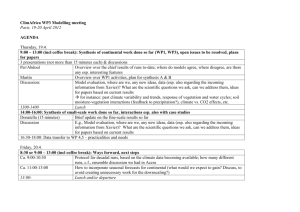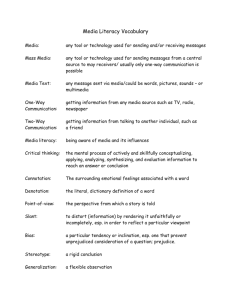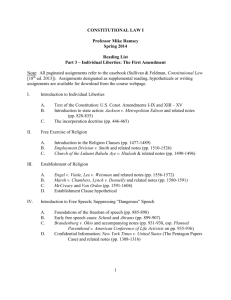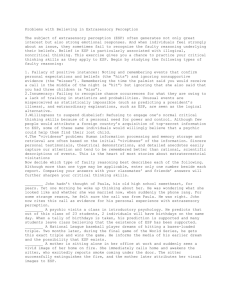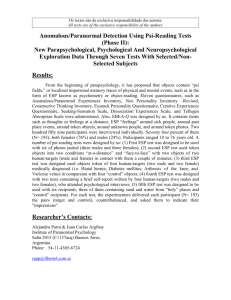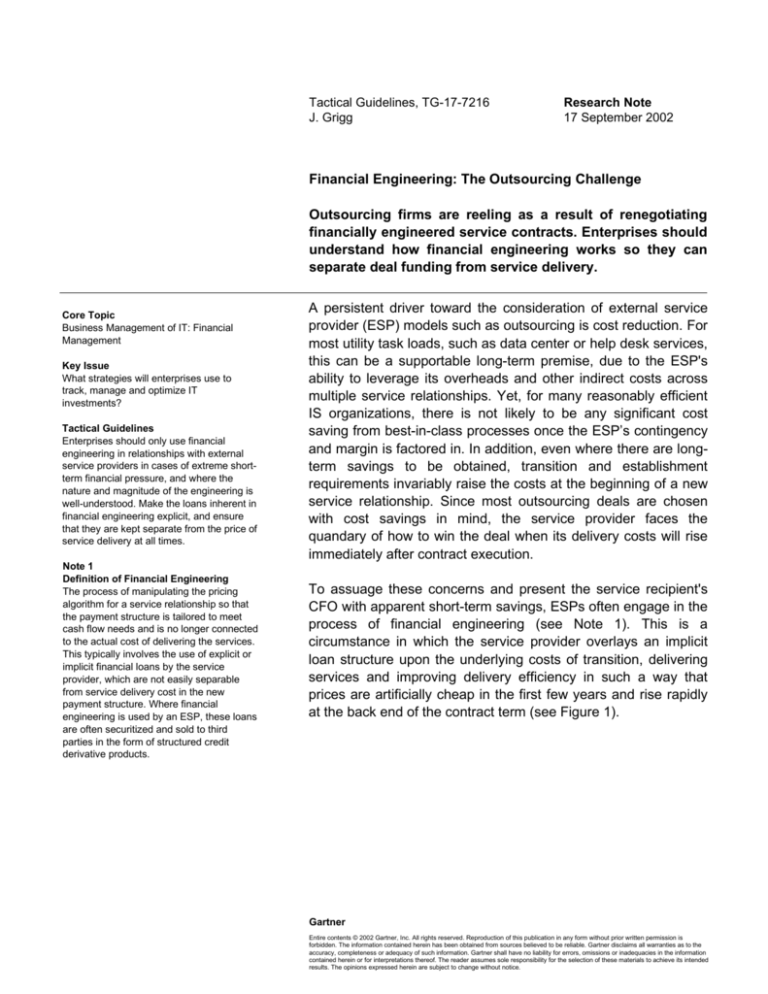
Tactical Guidelines, TG-17-7216
J. Grigg
Research Note
17 September 2002
Financial Engineering: The Outsourcing Challenge
Outsourcing firms are reeling as a result of renegotiating
financially engineered service contracts. Enterprises should
understand how financial engineering works so they can
separate deal funding from service delivery.
Core Topic
Business Management of IT: Financial
Management
Key Issue
What strategies will enterprises use to
track, manage and optimize IT
investments?
Tactical Guidelines
Enterprises should only use financial
engineering in relationships with external
service providers in cases of extreme shortterm financial pressure, and where the
nature and magnitude of the engineering is
well-understood. Make the loans inherent in
financial engineering explicit, and ensure
that they are kept separate from the price of
service delivery at all times.
Note 1
Definition of Financial Engineering
The process of manipulating the pricing
algorithm for a service relationship so that
the payment structure is tailored to meet
cash flow needs and is no longer connected
to the actual cost of delivering the services.
This typically involves the use of explicit or
implicit financial loans by the service
provider, which are not easily separable
from service delivery cost in the new
payment structure. Where financial
engineering is used by an ESP, these loans
are often securitized and sold to third
parties in the form of structured credit
derivative products.
A persistent driver toward the consideration of external service
provider (ESP) models such as outsourcing is cost reduction. For
most utility task loads, such as data center or help desk services,
this can be a supportable long-term premise, due to the ESP's
ability to leverage its overheads and other indirect costs across
multiple service relationships. Yet, for many reasonably efficient
IS organizations, there is not likely to be any significant cost
saving from best-in-class processes once the ESP’s contingency
and margin is factored in. In addition, even where there are longterm savings to be obtained, transition and establishment
requirements invariably raise the costs at the beginning of a new
service relationship. Since most outsourcing deals are chosen
with cost savings in mind, the service provider faces the
quandary of how to win the deal when its delivery costs will rise
immediately after contract execution.
To assuage these concerns and present the service recipient's
CFO with apparent short-term savings, ESPs often engage in the
process of financial engineering (see Note 1). This is a
circumstance in which the service provider overlays an implicit
loan structure upon the underlying costs of transition, delivering
services and improving delivery efficiency in such a way that
prices are artificially cheap in the first few years and rise rapidly
at the back end of the contract term (see Figure 1).
Gartner
Entire contents © 2002 Gartner, Inc. All rights reserved. Reproduction of this publication in any form without prior written permission is
forbidden. The information contained herein has been obtained from sources believed to be reliable. Gartner disclaims all warranties as to the
accuracy, completeness or adequacy of such information. Gartner shall have no liability for errors, omissions or inadequacies in the information
contained herein or for interpretations thereof. The reader assumes sole responsibility for the selection of these materials to achieve its intended
results. The opinions expressed herein are subject to change without notice.
Figure 1
The Difference Between Cost and Price in Financial Engineering
$
Loss
Financially
Engineered
Price
Profit
Cost of
Functional
Delivery
Transformed
Cost of
Delivery
Reorganization
Crisis
Time
Break-Even
Breakeven
Point
Source: Gartner Research
The straight line in Figure 1 marked "Cost of Functional Delivery"
depicts the gently rising cost of service delivery over time for a
given scope of work and using a given technology platform,
typically driven by rising labor costs. The curved function marked
"Transformed Cost of Delivery" depicts the actual costs borne by
the service provider in making the transition to the operating
state necessary to deliver the service in question, as well as the
long-term recurrent savings from doing so due to its continuous
improvement activities. The function marked "Financially
Engineered Price" reflects the new price structure, in which the
service recipient pays less cost at the front of the deal, and
steadily more as time progresses. The viability of such a model is
predicated on two conditions:
1. Uninterrupted payment for services until the break-even
point, at which the net present value (NPV) of the funds
received equals the NPV of the upfront investment.
2. An extremely high profit for each service delivered after the
break-even point is reached. It is this high marginal profit that
provides such a strong incentive for the ESP to use financial
engineering.
In operation, these assumptions rarely hold true for the length of
the contract, due to the increasingly rapid evolution of service
requirements over time and the extreme unpalatability to the
service recipient of paying prices that are above market during
the cost-recovery part of the curve. For these reasons, service
recipients often drive for renegotiation of the financial terms of
the relationship well before the break-even point is reached, a
trend that is particularly evident in times of economic downturn. If
the new service requirements are substantially less than those
Copyright 2002
TG-17-7216
17 September 2002
2
initially contracted for, the service provider can be financially
exposed by such a renegotiation. Additionally, financial troubles
within the service recipient may render adhering to the agreed-to
payment structure difficult or impossible, leading to a similar
exposure. The well-publicized crisis in the EDS-WorldCom
outsourcing relationship provides a vivid example of this
phenomenon, and clearly demonstrates the financial impact of
terminating a deal well before the break-even point.
ESPs deal with this problem by insisting on conditions such as
minimum payments or resource utilization in the contract, which
provide legal recourse to protect the ESP from the ramifications
of a breach. When the service recipient attempts to renegotiate
as an alternative to breaching the contract, the ESP is faced with
a difficult choice: Should it try to recover historical investments in
the deal through legal action despite the hostility and disruption
to the relationship with its client, or should it accept a lesser deal
that at least keeps cash flowing to service the upfront investment
in the engineered price structure?
The use of financial engineering presents a number of problems
for all parties that are affected by changes in their incentive
structures:
1. Service recipients face dramatically rising service prices at
the back end of these deals, which may not always be
apparent.
2. Service providers' margin models are at risk from early
renegotiation or client bankruptcy.
3. Internal IS organizations can't be price-competitive with ESPs
because of artificially low short-term pricing, skewing the
outsourcing decision against them.
4. Financial analysts who cover ESPs wonder why these
service firms are signing more business but not increasing
their profitability proportionately.
To address these problems, we advise enterprises to eschew
financially engineered ESP deals by:
1. Ensuring that service pricing is based on cost of delivery, and
will be periodically adjusted to take advantage of continuous
improvement opportunities.
2. Separating funding from service delivery costs in the pricing
structure of ESP relationships. In this way, any renegotiation
of service contracts can be based on a clear understanding
of service requirements, and the cash-flow management
Copyright 2002
TG-17-7216
17 September 2002
3
issue may be dealt with explicitly. Taking this approach also
assists in ensuring that the service provider's resistance to
renegotiating service levels during the term of the contract is
minimized, and, thus, supports the notion of a true
partnership between the parties.
Bottom Line: Enterprises should be wary of entering into
outsourcing relationships that employ financial engineering,
because their long-term service cost can be prohibitive and their
ability to adjust the scope of services delivered can be severely
compromised.
Copyright 2002
TG-17-7216
17 September 2002
4




